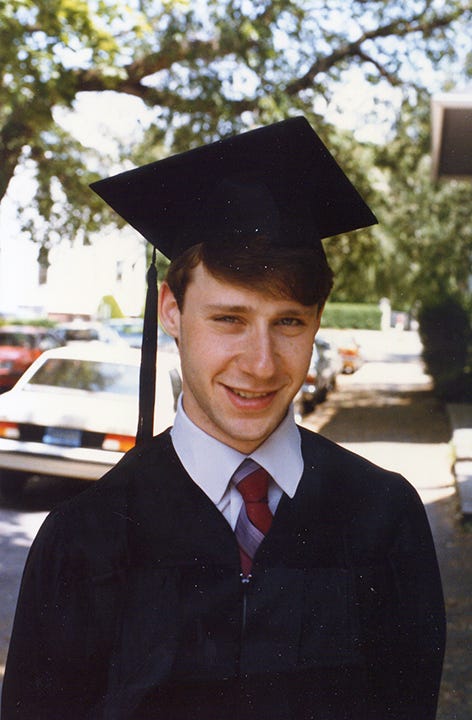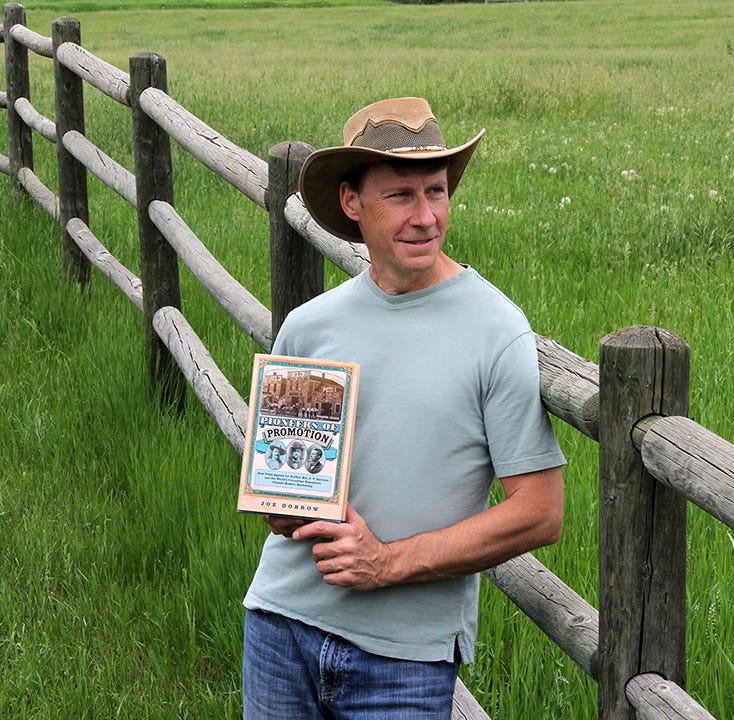[you can also view the Medium.com version of this article]
How my 1980s term paper for Jack Thomas became a new book… more than 30 years later
by Joe Dobrow ©2020
At Brown University in the spring of 1985, History 198R, “The Gilded Age,” met on Tuesdays and Thursdays from 2:30 to 3:50; Professor John L. Thomas, presiding.

Thomas was a tall, dignified, old-school historian with a shock of white hair, a twinkle in his eye, and a Down East accent that was as comfortable on him as an LL Bean sweater. He had been at Brown almost continuously since 1953, when he first arrived on College Hill to begin his Ph.D. program, and over the years had charmed and trained many a would-be historian (among them — NPR’s Mara Liasson a few years before me, and historian Karl Jacoby a few years after).
The Gilded Age was his area of expertise — by the spring of ’85 he had already written two books about this era, one of which, The Liberator, had won the 1964 Bancroft Prize; a third would follow. The 20 or so of us in his class, mostly seniors and graduate students, were honored to be there, and I for one wanted to produce a term paper (a 20–25 page “narrative-analytical account of any significant event in the years between 1870 and 1900…based on both primary and secondary sources”) worthy of this scholar whom I so revered.

Thomas asked us to submit ideas for our papers, and I proposed two major topics: the 1893 World’s Columbian Exposition, and Buffalo Bill’s Wild West.
Regarding the Exposition, I wrote to Thomas, “there are a lot of things about this event that fascinate me, not the least of which is its scale: everything there was ‘the biggest’ or ‘the largest’ or ‘the most powerful’ or ‘the greatest collection.’ Somebody, it seems to me, must have consciously decided to use the superlatives approach in organizing and promoting the event…. I don’t think anything has been written about that.”
The Wild West Show also appealed to me. “W.F. Cody started touring with his Wild West Show in 1883, just about the time… that the romantic image of the cowboy started to rise in and take hold of the American cultural consciousness. Here again, I think I could examine the event as a ‘promotion,’ with the backdrop of the glorification of that western idyll.”
Thomas OK’d both ideas, and I proceeded with the first.
Over the course of the next two months, as spring finally arrived on the Brown campus, I spent much of my time in the dark recesses of the John Hay and John Carter Brown Libraries, stirring the dust from original volumes about the Columbian Exposition that hadn’t felt a human hand in decades, and gently turning the pages of crumbling old newspapers that slowly yielded up their secrets of how the Exposition had been promoted. I became entranced by this magnificent Gilded Age spectacle, the battle between New York and Chicago to host it, and the remarkably sophisticated work of its Chief of Publicity and Promotion, Moses P. Handy — even while the daily Frisbee and Twister games took over the Main Green just outside.

My paper, War Between the City-States: The Promotion of the World’s Columbian Exposition, ran 49 pages, not 20–25, but it earned an “A” from Professor Thomas:
“This is a very good paper and would have been even better if it had been cut by at least one-third!” he banged out on a cover page with his manual typewriter. “In fact, I’m not sure that you don’t have two papers here: the intercity rivalry escapade and the profile of Handy…. [W]ere you to re-do this for publication somewhere, this is what you would have to do: [integrate] the battle of styles — regional differences as reflected in promotional styles… before the whole thing degenerates into a donnybrook.”
He noted that my “breezy style” was appropriate for the material, “and in general is not hard to take” — high praise indeed from JLT! He suggested I should submit it for one of the department’s prizes, although I think senioritis got the best of me and I didn’t do anything more with it.

Until, that is, 2014 — when, having just finished the tour for my first book, Natural Prophets, I began casting about for a new project, and stumbled upon my yellowing term paper from History 198R. The research and writing seemed surprisingly good for the work of a 22-year-old, I thought. What’s more, the intervening years had brought the digitization of old newspapers, producing a treasure trove of “new” source material, ghosting up out of the past like a photographic image in a darkroom fixer bath — not just about the World’s Columbian Exposition, but about Buffalo Bill’s Wild West (the very name of which I probably had not uttered since that term paper proposal early in the spring semester of 1985). The more I looked, the more excited I became. And what ensued was a four-year odyssey that ultimately produced a new book about the promotional styles of the Gilded Age: Pioneers of Promotion: How Press Agents for P.T. Barnum, Buffalo Bill, and the World’s Columbian Exposition Created Modern Marketing (University of Oklahoma Press, 2018). It was dedicated to Professor Thomas.

Although I did not realize it until after the book was published — when I unearthed my 1985 proposal as well as an audiotape of one of his lectures from History 198R – the focus and structure of Pioneers of Promotion were almost exactly as envisioned by Thomas and me 33 years earlier.
Chapters 8 and 9, drawn from my college history paper, were split up appropriately into the intercity rivalry escapade and the profile of Handy, just as Jack Thomas had suggested; and the book’s themes and leitmotifs followed what I now understand to be a blueprint that had been drawn up a lifetime ago, but to which I had been at least consciously oblivious during 29 years of incubation and 4 years of research and writing.
John L. Thomas passed away in 2005 at the age of 79. But somewhere in Down East heaven, I know, there is a twinkle in his eye.
###
FOOTNOTE: Professor Thomas was also responsible for another very powerful memory.
I took another course from him on “Literature of the Civil War,” in which each week a student led a discussion about a book we had just read. One week it was the turn of Dave Dornstein, and he clearly hadn’t read that week’s book but instead decided to make a mockery of the class by faking his way through it and drawing stick figures on the board. Professor Thomas rolled to a slow boil, his face getting redder and redder, until he finally pushed his chair away from the table, unfolded his limbs and rose to his menacing professorial height.
“DAWN-Stein!” he bellowed in his Maine accent. “I’m gonna’ run you up the flagpole!”
That was in 1983. Five years later, Dave Dornstein was killed in the bombing of Pan Am 103 over Lockerbie, Scotland.
A couple of months later, Brown University held a memorial service for Dornstein and three other members of the community who had been on the flight. They held a few speeches, and lowered the flag on the Main Green to half-mast to honor the fallen.
When I read about that I couldn’t help but remember John Thomas’ threat to run Dornstein up the flagpole.
Now he was halfway there.
